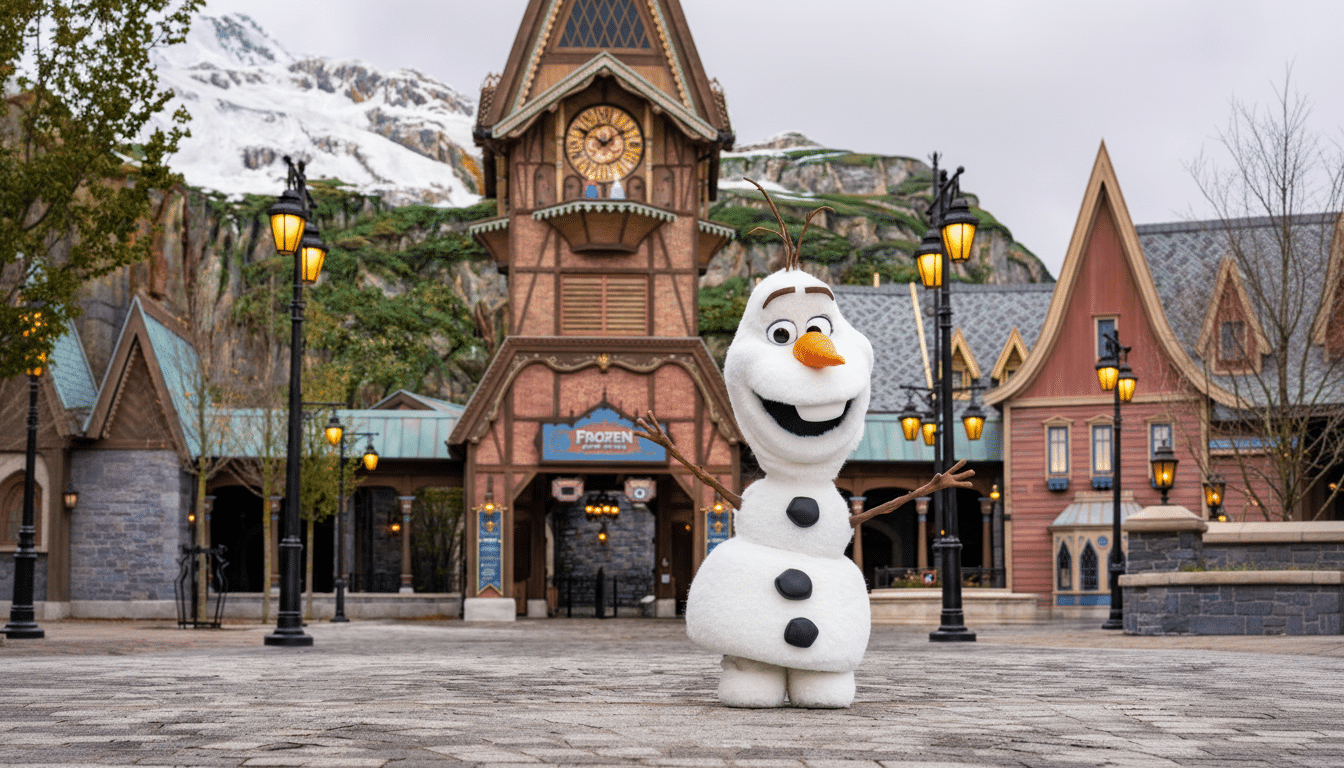Disney’s newest park character doesn’t simply wave from a stage — he wanders, reacts and even riffs with guests. That isn’t to say some kind of character-based robotics technology hasn’t been around, of course — just look at that enigmatic hotel android that’s both distracting and terrifying. But just into the uncanny valley from Flight of Passage robo-Shaman, Arendelle robots have emerged with independent movement in themed environments, subtle-faced emoting facial mechanics, and real-time Frozen banter, kicking off another level of control beyond what traditional (or even newer) fixed-tracked animatronics could handle.
A Free-Roaming Character Made for the Real World
Unlike the static, legacy figures of rides operating in a dark ride, Olaf is self-propelled and “show aware,” meaning he is equipped with on-board sensing to navigate park infrastructure pathways and stop for encounters. In behind-the-scenes footage released by Disney, he roams the World of Frozen area at Disneyland Paris, comes to a stop when cued, and impishly greets visiting park-goers with the exact kind of comedic timing fans are used to in the movies.

Walt Disney Imagineering claims the robot learned to perform thanks to reinforcement learning — a type of AI that rewards good behaviors — so Olaf is able to develop more consistent mannerisms and social cues through many, many repetitions. To help speed the learning, Disney worked with NVIDIA and Google DeepMind to create a new simulation framework called Newton and a virtual counterpart called Kamino that enables fast trials in the virtual world before trying them out on the real robot.
The result is a character with advanced motion and the emotion shown on his face. Olaf’s eyes, brows, mouth, and torso are designed to receive clear emotion beats; his carrot nose and stick arms are removable, as they would be in the movies. Iridescent fibers woven into the body shimmer like snowflakes under park lights.
From Lab to Main Street: Mobile Characters at Scale
Disney is presenting Olaf as the latest advance in a multi-year effort to develop mobile characters that can freely move through crowds. Previous pilots have been the BDX droids that were trialed at Star Wars-themed lands, while the self-balancing H.E.R.B.I.E. platform and “Project Kiwi” small-scale, free-roaming character initiative showed off realistic motion control. Olaf embodies these threads coming together: greater autonomy, faster refreshing, and deeper integration of story and mechatronics.
The potential impact is broad. Overall, Disney parks receive more than 100 million visits per year according to the TEA/AECOM Theme Index, so even incremental improvements to throughput of guests or entertainment quality can move satisfaction metrics in aggregate. Mobile characters can relieve pressure on fixed meet-and-greet lines, allow spontaneous “micro shows” on walkways, and keep entertainment spread throughout a land without the need for permanent infrastructure.

AI Safety, Live Dialogue Systems, and Show Control Tools
Autonomy in crowds requires safety to its fullest. Disney hasn’t released full specs yet, but the Olaf platform is built to run on predefined zones, with fail-safes that give human operators and show control systems the ability to stop or reroute the character in an instant. Learned proximity sensing and motion policies allow the robot to maintain natural choreography and avoid collisions.
On the conversational side, Olaf’s banter is fueled by AI systems designed to focus on family-friendly talk. Imagine speech recognition, intent detection, and just-in-time delivery of a curated response tree with character guardrails and content moderation — all industry-standard practice when dealing live with kids and polyglots. The target is consistency: humor that suits Olaf, timing that serves the scene, and language reminiscent of a park.
Where Guests Can See Olaf Next at Paris and Hong Kong
Disney says Olaf will make the first of two scheduled appearances at Disneyland Paris, with limited time planned for Hong Kong Disneyland Resort. For a closer look at the build and training process, the company also points to its We Call It Imagineering video series featuring both engineers and performers walking viewers through the tech-to-show pipeline for the new character.
Why This Debut Matters for Disney’s Next-Gen Characters
For decades, audio-animatronics amazed guests in show buildings. Olaf is a harbinger of a broader future: characters who step into the crowd, take in the moment, and perform with the flexibility of an excellent street actor. By combining reinforcement learning with homegrown simulation tools, such as Newton and Kamino, Disney can iterate more rapidly and field a greater number of characters — a process Imagineering leaders say compresses the path from screen to sidewalk.
If Olaf goes well, don’t be surprised by the toolchain’s application to other beloved characters, each lovingly calibrated for a specific gait, gesture, or personality. The real victory here is not just a snowman — it’s an AI-driven production model for living, breathing worlds that evolve as fast as fan expectations do.

